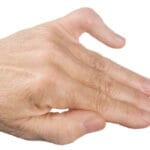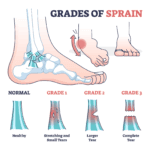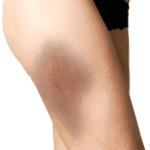Arm pain can range from mild discomfort to severe, chronic issues caused by conditions like arthritis, injuries, or repetitive strain. Many people seek ways to alleviate arm pain without relying on medications, and there are several proven strategies that can help you manage and reduce your discomfort naturally. Here are some effective tips for managing arm pain without the use of drugs.
Cold and Heat Therapy
- Cold Therapy: Applying ice to the painful area for 15-20 minutes can help reduce inflammation, especially if the pain is due to an acute injury like a sprain or strain. Cold therapy can numb sore tissues, reduce swelling, and temporarily ease pain.
- Heat Therapy: Using a heating pad or warm compress increases blood flow to the affected area, which can relax tight muscles and improve flexibility. This method is ideal for chronic pain conditions like arthritis. Alternate between heat and cold for optimal relief.
Stretching and Gentle Exercises
- Regular, gentle stretching can improve flexibility and mobility in your arm. Exercises like wrist rotations, shoulder shrugs, and bicep stretches help maintain range of motion and prevent stiffness, particularly if your pain is due to overuse or arthritis.
- Low-impact activities like swimming, yoga, or tai chi can strengthen the muscles around the joints and reduce arm pain over time by improving blood flow and muscle tone.
Posture Improvement
- Poor posture while sitting, working, or sleeping can exacerbate arm pain. Maintaining proper alignment in your neck, shoulders, and back reduces strain on your arm muscles and joints.
- Use ergonomic tools, especially if you work at a desk or perform repetitive tasks. Adjust your chair, computer screen, and keyboard to ensure you’re sitting in a position that doesn’t overstrain your arms or shoulders.
Massage Therapy
- A gentle massage can help relax tight muscles and improve circulation in the arms. It also helps break down scar tissue and adhesions, which can develop after injuries. Massaging with essential oils like peppermint or eucalyptus can offer additional relief due to their anti-inflammatory properties.
Mind-Body Techniques
- Meditation and Mindfulness: Managing pain involves addressing both physical and mental factors. Practicing meditation or mindfulness can reduce your perception of pain by calming the nervous system. Techniques like deep breathing, progressive muscle relaxation, and guided imagery can help ease tension and discomfort.
- Cognitive Behavioral Therapy (CBT): CBT focuses on changing negative thought patterns associated with chronic pain. It helps patients develop coping strategies that can reduce pain sensitivity and improve overall quality of life.
Physical Therapy
- Working with a physical therapist is one of the most effective ways to manage arm pain. Therapists can create a tailored exercise regimen that strengthens weak muscles, improves joint stability, and reduces the likelihood of future injuries. They can also teach you proper techniques to avoid pain during daily activities.
Anti-inflammatory Diet
- Diet plays a significant role in managing inflammation and pain. Incorporating anti-inflammatory foods like leafy greens, berries, nuts, and fatty fish can help reduce systemic inflammation, which is often a culprit in chronic pain conditions.
- Avoiding processed foods, sugary drinks, and refined carbohydrates can also decrease inflammation and improve overall joint health.
Acupuncture and Acupressure
- Acupuncture involves inserting fine needles into specific points on the body to balance energy and reduce pain. Studies have shown it can be effective for relieving arm pain, especially for conditions like tennis elbow or arthritis.
- Acupressure, which involves applying pressure to certain points, offers a similar approach without needles. This method can be used at home to target pain areas on the arms.
Sleep Optimization
- Poor sleep can worsen pain, and chronic pain can negatively impact sleep. Create a sleep environment that promotes relaxation and pain relief by using supportive pillows and maintaining a comfortable sleep posture that doesn’t put stress on your arm.
- Practice sleep hygiene, such as maintaining a consistent bedtime and avoiding caffeine late in the day, to improve your overall sleep quality and reduce pain sensitivity.
Frequently Asked Questions
How long should I apply cold and heat therapy for arm pain?
- Cold therapy is typically applied for 15-20 minutes, up to three times a day during the initial stages of an injury. Heat therapy can be used for 15-30 minutes at a time to relax tight muscles and improve blood flow.
Is it safe to exercise when I have arm pain?
- Yes, gentle exercises and stretching can help relieve arm pain. It’s essential to avoid high-impact or strenuous activities that may exacerbate the pain. Consulting a physical therapist can ensure you’re doing the right exercises for your specific condition.
Can poor posture really cause arm pain?
- Absolutely. Poor posture can lead to muscular imbalances and joint strain in the arms, particularly if you spend long hours sitting at a desk or performing repetitive tasks. Improving your posture can significantly reduce arm pain.
How does an anti-inflammatory diet help with arm pain?
- An anti-inflammatory diet helps reduce systemic inflammation, which can contribute to pain, particularly in conditions like arthritis. Foods like leafy greens, berries, and fatty fish provide nutrients that can decrease inflammation and support joint health.
When should I consider seeing a doctor for arm pain?
- If your arm pain persists despite using at-home treatments, or if it’s accompanied by symptoms like swelling, redness, numbness, or weakness, it’s essential to see a doctor. These could be signs of a more serious underlying condition that requires medical intervention.
Conclusion
Managing arm pain without medication is entirely possible through a combination of physical therapy, lifestyle changes, diet, and holistic treatments. These methods not only help alleviate pain but also improve overall well-being. Whether you’re dealing with chronic conditions like arthritis or recovering from an injury, the strategies outlined above offer a natural, effective approach to arm pain relief.





